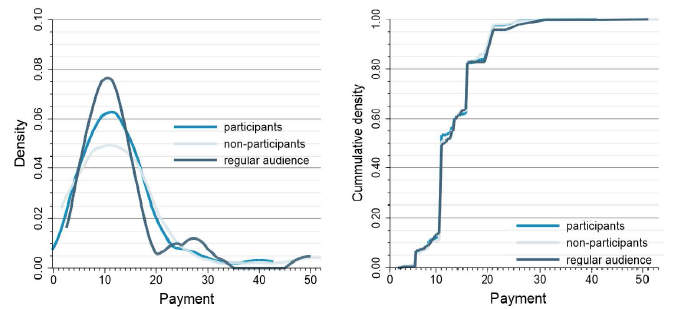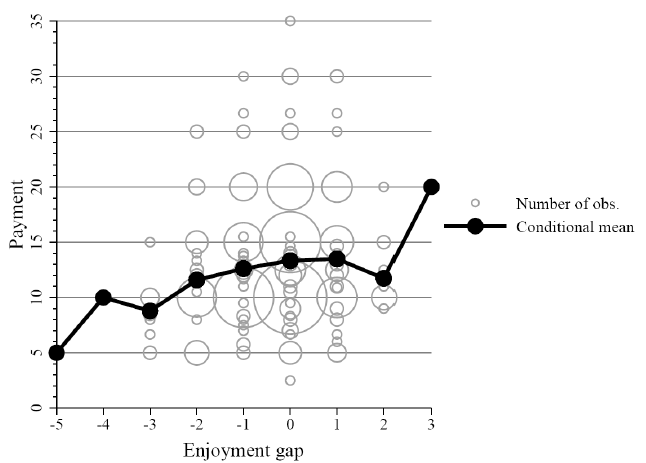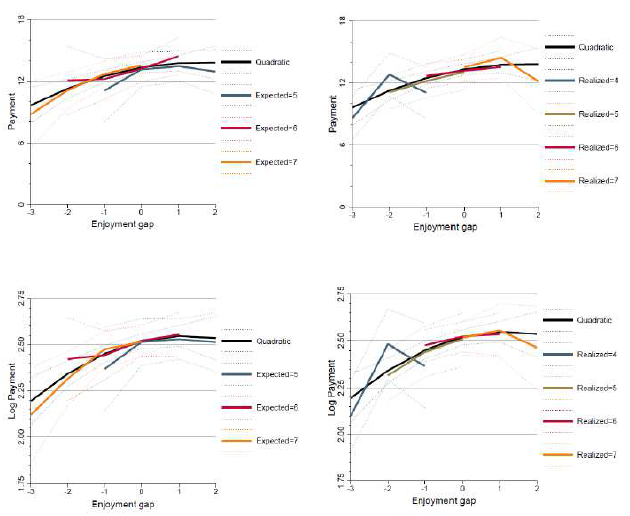Consumption decisions have always been explained in Microeconomics courses as the result of maximizing a utility function, subject to a budget constraint. As a consequence, consumers who enjoy a product more should be willing to pay more for it, holding their income constant. But, is it that the case? How can we measure the degree of satisfaction from consumption and relate it to willingness to pay for goods and services?
These are important as well as difficult questions that smart entrepreneurs should answer when thinking about effective marketing strategies and successful pricing decisions. Ayelet Gneezy, Uri Gneezy, Joan Llull, and Pedro Rey-Biel address these questions in their BSE Working Paper (No. 944), “Expectations, Satisfaction, and Utility from Experience Goods: A Field Experiment in Theaters.”
The field experiment
The authors collaborated with a theatre production company, Sixto Paz Producions, to design an intervention during the regular run of the theater show “The Effect,” written by Lucy Prebble, at Sala Beckett in Barcelona. Before the play started, a random sample of the audience was asked to fill out surveys, including demographics, theater attendance habits and, crucially, expected enjoyment from the show, measured on a seven point scale. Once the show was over, viewers were asked to fill out another questionnaire; this one was related to how much they had actually enjoyed the show. Finally, spectators, who knew beforehand that this was a “pay-what-you-want” show, were asked to pay.
The first and crucial step to validate is that the intervention does not affect payments. To do so, the authors compare the distribution of payments between audience members who filled out the questionnaires, those who did not, and those who attended the show on nights when no questionnaires were distributed. The figure below shows that the intervention did not influence payments at all.

Therefore, the authors can focus on the most interesting question: did those who pay more actually claim in the questionnaires that they enjoyed the play better? What role did expectations have in payments?
The enjoyment gap matters
The main finding of the article is that not only declared enjoyment but also expectations play a role in how much individuals end up paying. The enjoyment gap, defined as the difference between declared expected and experienced enjoyment, both measured on the same 7-point scale, is the most important determinant of pricing decisions. These can already be seen in the following figure.

The authors also run regressions controlling for the demographic and theater attendance variables they gathered in their questionnaires. Out of these variables, the age of the audience members turns out to be important in explaining payment, most likely because it can be interpreted as a proxy for income. All other variables, except the enjoyment gap, are not significant factors in explaining payments. This conclusion is validated by the fact that the model predicts that individuals with different expectations pay the same if the enjoyment gap is the same. Similarly, as also shown in the next figure, individuals with different levels of realized enjoyment, pay the same if the gap is the same. This translates into the lines predicted in the model in the next figure lying on top of each other.

Implications for marketing and pricing decisions
The authors conclude their paper with a discussion of the implications of the results for marketing and pricing decisions.
There exists a trade-off between setting consumers’ expectations high and risking not to fulfill them. Disappointed consumers are harmful in experience good markets, in which future consumers are driven by recommendations and word of mouth.
On the other hand, one cannot set expectations too low without risking not attracting consumers. Regarding pricing, pay-what-you-want schemes are particularly interesting for experience goods, because when using them, consumers do not risk their money by paying ex-ante for a product they are not convinced they are going to like. In fact, this may be the reason why, in some instances, products such as software, music albums, restaurant meals and pictures taken at touristic places have in fact been profitably sold under pay-what-you-want pricing schemes.
Original image by mecklenburg




